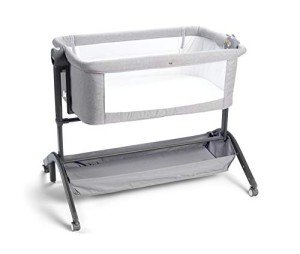Company Overview
-
Founded Date May 14, 1943
-
Posted Jobs 0
-
Categories Primates
Company Description
15 Secretly Funny People Working In Baby Cot Bed
The Ultimate Guide to Choosing a Baby Cot Bed: Safety, Features, and More
When it comes to welcoming a new baby, among the most crucial purchases parents will make is a baby cot bed. This important piece of furnishings is not only where a baby will sleep; it’s also an area of convenience, safety, and security. Given the plethora of choices offered on the market today, making a notified decision can be frustrating. This guide intends to simplify the process by covering important functions, security standards, types of cot beds, and far more.
Tabulation
- Introduction
- What is a Baby Cot Bed?
- Safety Standards
- Kinds Of Baby Cot Beds
- 4.1 Traditional Cots
- 4.2 Convertible Cot Beds
- 4.3 Portable Cots
- Key Features to Consider
- Selecting the Right Mattress
- Setting Up the Cot Bed
- FAQs
- Conclusion
1. Introduction
A baby cot bed serves as a devoted sleeping location for infants and is developed to supply comfort and security. As brand-new parents navigate the various choices readily available, it is essential to understand the different kinds of cot beds, security guidelines, and necessary features to make the best crib Newborn selection.

2. What is a Baby Cot Bed?
A baby cot bed is a specialized furniture piece where infants sleep. Unlike regular beds, cot beds are particularly designed for babies and provide a safe environment for them to rest. They generally include high sides to avoid infants from falling out and typically featured adjustable mattress heights to accommodate a growing kid.
3. Security Standards
When choosing a baby cot bed, security needs to be the foremost consideration. Here are some critical safety standards to bear in mind:
- Certification: Ensure the cot bed fulfills nationwide and international security requirements, such as the ASTM International and Consumer Product Safety Commission (CPSC) regulations.
- Slat Spacing: The distance between slats must not go beyond 2 3/8 inches to prevent the baby’s head from slipping through.
- Stability: Ensure that the cot bed does not wobble or shake.
- Non-Toxic Materials: Check for non-toxic finishes and materials to guarantee the baby’s safety.
4. Kinds Of Baby Cot Beds
The market offers various kinds of cot beds, each dealing with various requirements. Below is a summary of the most common types:
4.1 Traditional Cots
Traditional cots are standalone furnishings items created particularly for babies. They typically include repaired sides and multiple adjustable mattress heights.
4.2 Convertible Cot Beds
Convertible cot beds can be transformed into toddler beds, enabling extended usage. This type is an economical choice as it grows with your kid.
4.3 Portable Cots
Portable cots, likewise referred to as travel cots or playards, are lightweight and created for families on the go. They can be easily put together and disassembled for travel.
5. Secret Features to Consider
When choosing a cot bed, parents must consider the following functions:
- Adjustable Mattress Height: This function permits decreasing the bed mattress as the baby grows, making it much easier for moms and dads to lift the child.
- Material Quality: Look for a cot bed made from resilient, non-toxic wood.
- Security Features: Some cot beds feature rounded edges and extra security locking systems.
- Reduce of Assembly: Check if the cot bed needs minimal tools for assembly and how simple it is to take apart.
- Storage Options: Some cot beds come with built-in drawers for keeping baby fundamentals.
6. Picking the Right Mattress
The ideal bed mattress is crucial for your baby’s sleep quality. Here are some pointers for choosing an appropriate mattress:
- Firmness: A bed mattress should be firm adequate to avoid the baby from sinking in too deep, decreasing the risk of suffocation.
- Breathability: Opt for breathable materials to guarantee correct air flow.
- Water-Resistance: Consider waterproof covers for easy cleaning and health.
7. Setting Up the Cot Bed
Setting up the cot bed properly is vital for security. Here are actions parents need to follow:
- Choose the Right Location: Place the cot bed away from windows, cables, and other prospective dangers.
- Examine the Height: Adjust the mattress height based upon the kid’s age and mobility.
- Remove Extras: Avoid positioning pillows, blankets, or stuffed toys inside the cot bed when the baby is sleeping.
- Inspect Regularly: Regularly check all parts and screws for wear and tear.
8. FAQs
Q1: At what age should a baby shift from a cot to a bed?
Most kids shift to a toddler bed in between 18 months to 3 years, depending upon their development and specific needs.
Q2: How can I ensure my baby sleeps safely in their cot bed?
Ensure the cot is without soft bedding, toys, and anything that might obstruct the baby’s breathing. Follow all safety guidelines carefully.
Q3: Is it essential to have a different nursery for the cot bed?
While lots of moms and dads select to have a separate nursery, it is not a need. As long as the cot bed is in a safe and quiet environment, it can be positioned in the moms and dads’ bedroom.
Q4: When is it safe to decrease the mattress?
Typically, the mattress must be lowered when the baby can pull themselves up or when they can sit separately, typically around 6 months.
9. Conclusion
Choosing the best baby cot bed is an essential aspect of getting ready for a new arrival. Parents ought to prioritize safety, functionality, and quality, guaranteeing that the cot bed meets their household’s special requirements. By putting in the time to research and comprehend different types of cot beds, moms and dads can supply a safe and comfy sleeping environment for their little one to flourish.
With mindful consideration, parents can make sure that the cot bed is not simply a furniture piece, however a sanctuary where their baby can sleep peacefully during those vital early years.


